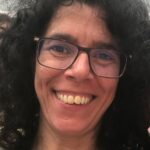Department/Area head
Description
The Department of Geological Hazards and Climate Change currently has 46 members, with an equal balance between women (52%) and men (48%). It is made up of an equal number of technical and scientific staff, and 20% of young researchers recruited under competitive projects.
The main goal of the Department is to provide society with scientific information, methods, tools and solutions to mitigate the impact of geological hazards and the effects of Climate Change.
It includes research on: earthquakes, tsunamis, volcanic eruptions, landslides, floods, droughts, sea level, ocean productivity and acidification, etc.
It currently has 46 members, with an equal balance between women (52%) and men (48%). It is made up of an equal number of technical and scientific staff, and 20% of young researchers recruited under competitive projects.
The Department is currently leading 21 initiatives involving the management of 3.1 million Euros: 11 national competitive projects; 5 international competitive projects; 2 research contracts; 3 collaboration agreements and is leading an intramural project to continue the work started during the volcanic eruption in La Palma, 2021.
Objetivos
-
To contribute to the knowledge of hazards through geology and related disciplines: causes and effects.
-
To generate scientific information on geological hazards in order to offer society an open and up-to-date service that is useful for preventing catastrophes and reducing their impact.
-
Promote the development of methodologies and tools for the risks derived from Climate Change and the adoption of criteria and measures for adaptation.
-
Introduce the climatic perspective in disaster risk assessments, especially in strategic areas: critical infrastructures, mining liabilities, urban environments and natural and cultural heritage.
-
Revalue the geological record as a key to understanding the current climate and its evolution.
-
Identify natural trends in climate change in order to objectively assess the impact of human actions.
-
Provide information, training, products and services to public administrations.
-
Improve the social perception of geohazards and promote citizen science to achieve a more prepared and adapted society.
Lines of research
- Characterisation, analysis, monitoring, modelling and prediction of geological hazards.
- Geology applied to hazard studies.
- Evaluation of geological risks and resources considering Climate Change projections and scenarios.
- Palaeoclimatology: palaeoclimatic variability and palaeo-oceanographic reconstructions. Application of Climate Indices.
- Advice on management and communication in the field of geological hazards.
Groups
Projects
Images
Related staff
© 2024 Instituto Geológico y Minero de España












